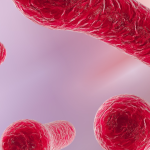Polio is one of those diseases that only seemed to be a problem years ago – but is it still around today?
The Polio virus was identified in 1908. At its peak in the 1940s and 1950s, Polio paralysed or killed over a million people every year worldwide.
It is still found in a small number of countries across the world today. Unfortunately, it has not been eradicated yet, so it is still a requirement to protect yourself against polio so that it does not flare up again. As long as there remains a source for natural polio infection in any part of the world, a threat of disease continues among unvaccinated individuals.
What is Polio?
Polio is a disabling and life-threatening disease caused by the poliovirus. It can lead to paralysis, breathing problems or even death.
The virus typically spreads from person to person through personal contact and contaminated food and water. The virus lives in an infected persons throat and intestines, so it can be spread by contact with infected faeces and less commonly coughing and sneezing.
What are the symptoms?
Most polio cases do not present any symptoms or become sick in any way. Around 95% of all Polio cases will have no symptoms. For the 4-8% who do, the symptoms differ depending upon what type of polio you have.
Many people who have mild symptoms make a full recovery. These symptoms may include a fever, sore throat, vomiting, headache, tiredness, back/neck pain, joint stiffness or stomach-ache.
Of the small percent of people who develop more serious symptoms:
- 1 in 200 people develop paralysis due to the virus attacking and killing the motor neuron cells in the nervous system which control movement.
- 1 in 25 people develop meningitis through infection of the spinal cord
- Some may feel muscle pain, have spasms or floppy limbs
The virus can affect the muscles that help you breathe causing respiratory failure or paralysis, which can cause permanent disability and death.
Complications
Post-polio syndrome can occur 15-40 years after someone is first infected. Its symptoms can include, muscle weakness or shrinkage, tiredness, difficulties swallowing or breathing, sleep issues, poor memory or moods swings.
Is there treatment available for Polio?
Lab tests from throat swabs or stool samples can confirm if you have a polio infection. There is no cure for polio. The focus is on good supportive care to manage the symptoms which increase the patients’ comfort and prevent any further complications occurring.
Preventing Polio
There is a safe and effective vaccine which has been tested and developed many times over since 1960 when Albert Sabin’s poliovirus vaccine was first licensed.
Where is Polio found today?
In 1988 Polio was endemic in 125 countries.
During this year the World Health Organisation launched the Global Vaccination Programme. By 2017 with only 22 cases reported, Polio was only endemic in 3 countries as it remains today. Even though incidents of Polio have fallen dramatically, it is still seen in Nigeria, Pakistan and Afghanistan where sporadic outbreaks still occur. Unfortunately, vaccination remains difficult in these areas due to ongoing violence and humanitarian disturbances.
If cases are low, why it is important to get vaccinated?
Vaccination programmes are only effective if a large percentage of the population take the vaccine. A fall in numbers taking a vaccine leads to outbreaks which spread across countries. This has been illustrated by the recent fall in the uptake of the MMR jab, which has led to outbreaks in Europe and England again, even though the UK had officially eradicated it back in 2007.
Vaccines protect you and your community, they go through stringent research and testing, and reduce disease. They currently save 5 lives every minute, that’s an estimated 1.5million deaths prevented each year – it is a worthwhile investment.
DTP Vaccine (Revaxis)
The UK combine Diphtheria, Tetanus and Polio in a single vaccine. The vaccine is inactive, which means it only contains dead virus. A series of three doses are 99-100% effective against polio. Immunity does wane over time so further vaccinations may be required.
Vaccine schedule
The combined vaccine is given in the UK at age 2 months, 3 months and 4 months. Further booster doses are given at 3-5 years of age and again at 14 years of age.
Travelling
If you are planning to travel, it’s a good idea to check that your vaccinations are all up to date to make sure that you stay healthy. Use the vaccine checker to find out what vaccinations you require such as yellow fever or antimalarials. If you plan to visit a polio-effected country you should get vaccinated if you have not done so already, or get a booster if it has been over 10 years since your last dose. Some countries where there is risk of infection may require proof of vaccine before you are allowed to travel.
Extra tips
Other methods to limit the spread of any illness whilst you are away or at home include washing your hands regularly with soap or hand sanitizer, avoid touching your face with dirty hands, making sure you cover your mouth if you sneeze of cough and avoid close contact with people who are sick.
To conclude
Polio is still a current virus. The only way to control it, reduce it and hopefully eradicate it is to continue to vaccinate the global population. Make sure you play your part in protecting yourself, your family, your community and the next generation.
DocHQ Ltd is a Health Tech company improving choices. We help you connect efficiently to health support and advice whether you are at home, work or travelling. See our website for our services or call us on 0330 088 0645.



